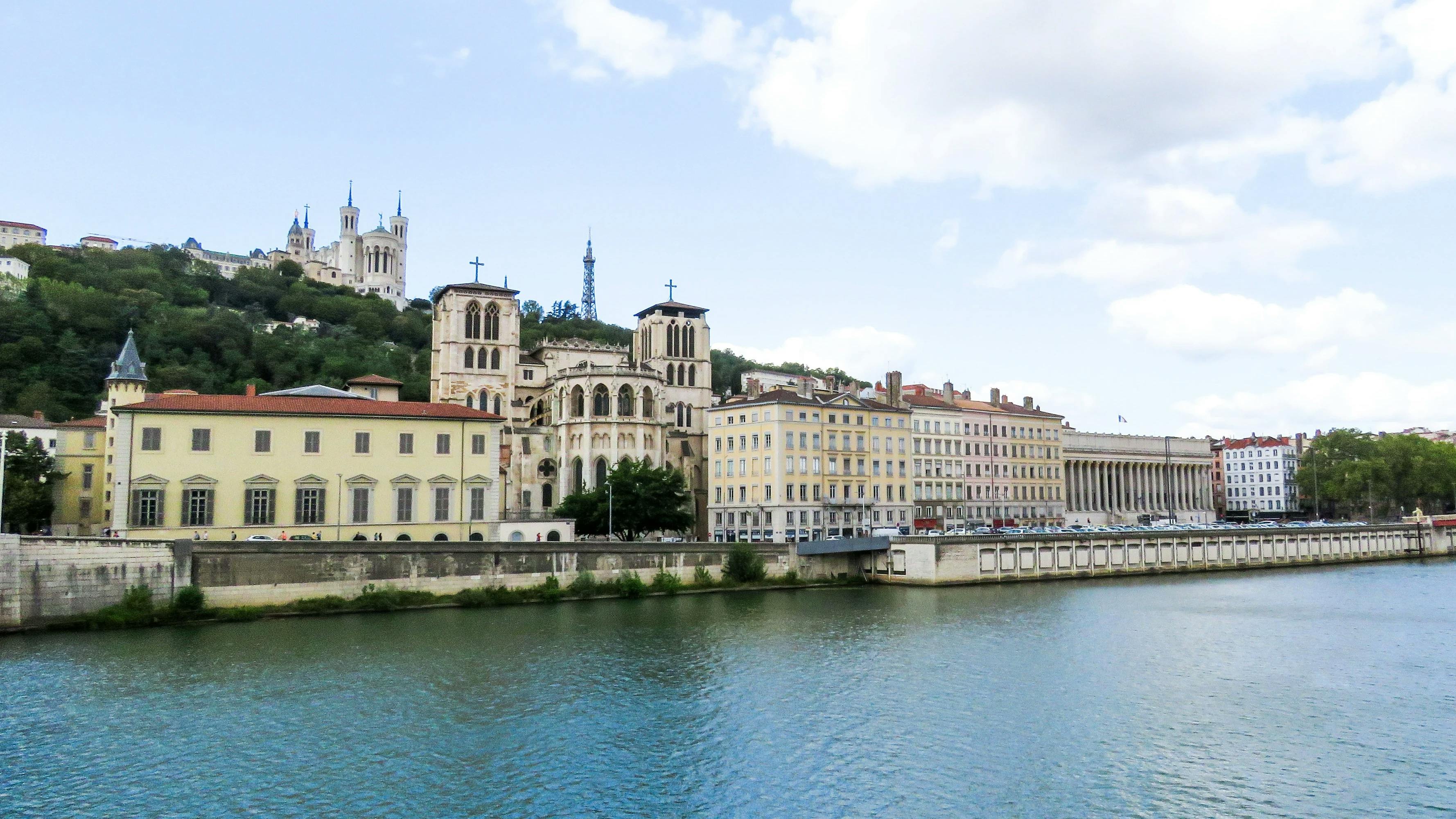France currently reigns as the most visited country in the world, leaving little question that many people find traveling in France a must-do at some point in their lives.
Perhaps because of work... perhaps because of family commitments... perhaps for some other reason... a move to France may be something you’re considering for the future, not right now. In the meantime, you’ll want to visit.
Getting to France
As France is the most visited country in the world, with 90 million tourists per year according to the World Tourism Organization, you won’t be surprised to hear that flying to France is easy and convenient. If it’s your first visit to the country, you’ll likely land at Charles de Gaulle (CDG), one of France’s main airport hubs, in Paris. Direct flights leave from Los Angeles, New York, Chicago, and Miami, among others, and airlines flying these routes include Air France, American Airlines, Delta, United Airlines, Lufthansa, and British Airways, again, among others. East coast flights will naturally cost less. A typical New York (JFK) to Paris (CDG) flight, booked a few months in advance, starts at $740 for a round trip. If you’re traveling from Los Angeles (LAX) to Paris (CDG), flights cost around $1,200 for the same period.
Charles de Gaulle has RER train stops in Terminal 2 and Terminal 3 of the airport, which take you directly to the city center. Shuttles, buses, and taxis are other popular ways to get to Paris, and the journey should take no longer than 45 minutes.
Travelers can also fly into Paris Orly (ORY), the second busiest airport in France, but this airport sees more domestic and European flight traffic.
Flight times vary, and you can expect to have a large window to choose from when flying in and out of Paris. France expat Tuula Rampont had this to say: “I’ve taken red eye (overnight) flights to France from both the east and west coast of the US, and I really prefer this mode of travel. These are fairly long flights, from either coast, and I get in a few hours’ sleep before adjusting to the time difference in France.”
Other busy, frequently used airports in France include Nice, Marseille, Lyon, and Toulouse. Again, many of these flights are domestic, and if you are flying to the US or Canada, you can expect to have at least one connecting flight. The location of your connection will depend on which airline you choose. Tuula Rampont says, “I like to book my connecting flights in Europe because I find the airports are smaller and easier to navigate. I usually fly out of Los Angeles, and when I fly with Lufthansa, my connections are either in Frankfurt or Munich. It’s normally only an hour or two between flights, then a straight shot over to Marseille—the closest airport to where I live.” At the time of publication, Delta was offering non-stop flights between Nice and New York.
Air France, Delta, and several other airlines offer direct flights from Toronto, Montreal, and Vancouver to Paris. Varying times are listed, starting from CA$600 and up for a round trip, depending on the time of booking. Air Canada also has a selection of direct or indirect (with one connection) flights to Paris.
Flying in France
The price of air travel within France can vary. Much depends on where you want to go, whether you can take advantage of special offers, and whether you’re happy with the “no-frills” experience of budget airlines. A number of websites (such as www.momondo.com) look for the best offers on the market. For example, a flight from Paris to Nice would cost you just €43 ($45), including taxes, with budget airline EasyJet.
Momondo gives you prices not only for flights but also for France’s TGV trains.
You can access arrival and departure information for the Orly and Charles de Gaulle airports through Paris Aéroport (www.parisaeroport.fr).
Train Travel in France
Fast, efficient, reliable, clean... don’t waste your money by traveling first class on French trains. Unlike in some countries, you’re not in for a horrible experience if you travel second class. The trains are run by SNCF, and the agency is tremendously proud of its TGV trains. The acronym stands for Train de Grand Vitesse (“high-speed train”), and they’ll whisk you from the capital to far-flung cities in a matter of hours. The journey from Paris to Aix-en-Provence takes around six hours by car, but with the TGV from Paris’ Gare de Lyon Station, the journey time is under three hours.
Paris to Bordeaux is only three hours, and there are plans in place to have a direct Bordeaux to London service (through the Channel Tunnel), taking only five hours, in the future.
There are hundreds of regional services wending through the French countryside, so it is worth checking if the town or village you want to visit is on a line. Bellac in Limousin, for example, has a small station with connections to Poitiers. Some of these far-flung towns boast the most beautiful railway stations in France. It’s worth traveling to Limoges just to see Limoges Benedictine station!
You can book tickets online and check out various deals on the SNCF website (www.sncf.com). Mature travelers (and residents) may find it worth investing in a carte senior, which gives reductions of 25% to 50% on most train journeys, including the TGV. Valid for one year, the card costs €49 ($51.50). However, if you are flexible about the times you travel, it usually works out cheaper with special offers. Even without the card, there are discounts on some services for those over 60, so don’t forget your passport or similar ID. For more information on rail travel in general, contact SNCF.
Inter-City Bus Travel
France’s rail network was protected until 2015, when it was opened up to competition. As such, a network of inter-city bus services is still developing. There are plenty of new operators running coach services between major population centers, stopping off at towns and villages along the way.
Three of the operators are:
Ouibus is a subsidiary of SNCF. Routes cover most of France and include routes to Barcelona, London, Belgium, the Netherlands, and Northern Italy. They do not travel to Germany, however.
Isilines serves routes throughout France. An easy way to check prices and reserve your tickets if on the website: www.thetrainline.com.
FlixBus is a German operator, which has quickly expanded in France since establishing a presence there.
There are many other operators, so it is worth shopping around if you like traveling by bus.
Buses can be very cheap compared to other forms of transport. A single ticket from Brussels to Paris can cost as little as €14 ($14.70); bus tickets from Bordeaux to Paris are available from €19 ($19.95); or London to Lyon from €83 ($87.15).
Excursions from Paris

Even if you’re planning only a short stay in Paris, you may find you have time for a day out in the provinces. Day trips by minibus are offered through Paris Trip (website: https://paris-trip.rezdy.com/), a company that will pick you up and drop you off at your hotel.
Versailles
Residence of the Sun King. A half-day visit to Versailles Palace, residence of the Sun King, Louis XIV. Here you will discover the famous à la Française gardens as well as the Grand Trianon and Petit Trianon with Marie Antoinette’s model hamlet. The €75 ($78.75) price includes your admission ticket, but the half-day visit to the great apartments, the Hall of Mirrors, and the Queen’s apartments is unguided, except for an audio tour. The tour departs daily (except Mondays and bank holidays).
Loire Valley Castles: The King’s Road
A day in the Loire Valley, exploring the three famous Renaissance castles of Chambord (the residence of the King Francis I), Amboise, and the castle bridge of Chenonceau. The €235 ($246.75) price includes admissions and a three-course lunch with wine. The tour departs every Tuesday and Sunday.
Normandy: The D-Day Landing Beaches
Arriving at the heart of where the Battle of Normandy was fought, this trip includes visits to the Caen Peace Memorial, Pegasus Bridge, Arromanches, and the Batterie de Longues, where a German artillery battery gave Allied ships a pounding on the morning of June 6, 1944. The only coastal battery to have kept its guns, it portrays what an Atlantic wall-gun emplacement was really like. Another strongpoint of the German fortifications, the famous Pointe du Hoc, was taken by storm by Colonel Rudder’s Rangers on D-Day. Overlooking Omaha Beach, the American cemetery contains more than 9,000 white crosses, perfectly aligned on a 170-acre plot. The cost of the tour is €230 ($241.50) with departures every Tuesday, Thursday, and Saturday, except for during the month of January.
Get Your Free France Report Here
Get Your Free France Report Here
Learn more about France and other countries in our daily postcard e-letter. Simply enter your email address below and we’ll send you a FREE REPORT: A Taste of France: All the Ingredients for the Good Life.

By submitting your email address, you will receive a free subscription to IL Postcards, The Untourist Daily and special offers from International Living and our affiliates. You can unsubscribe at any time, and we encourage you to read more about our Privacy Policy.














